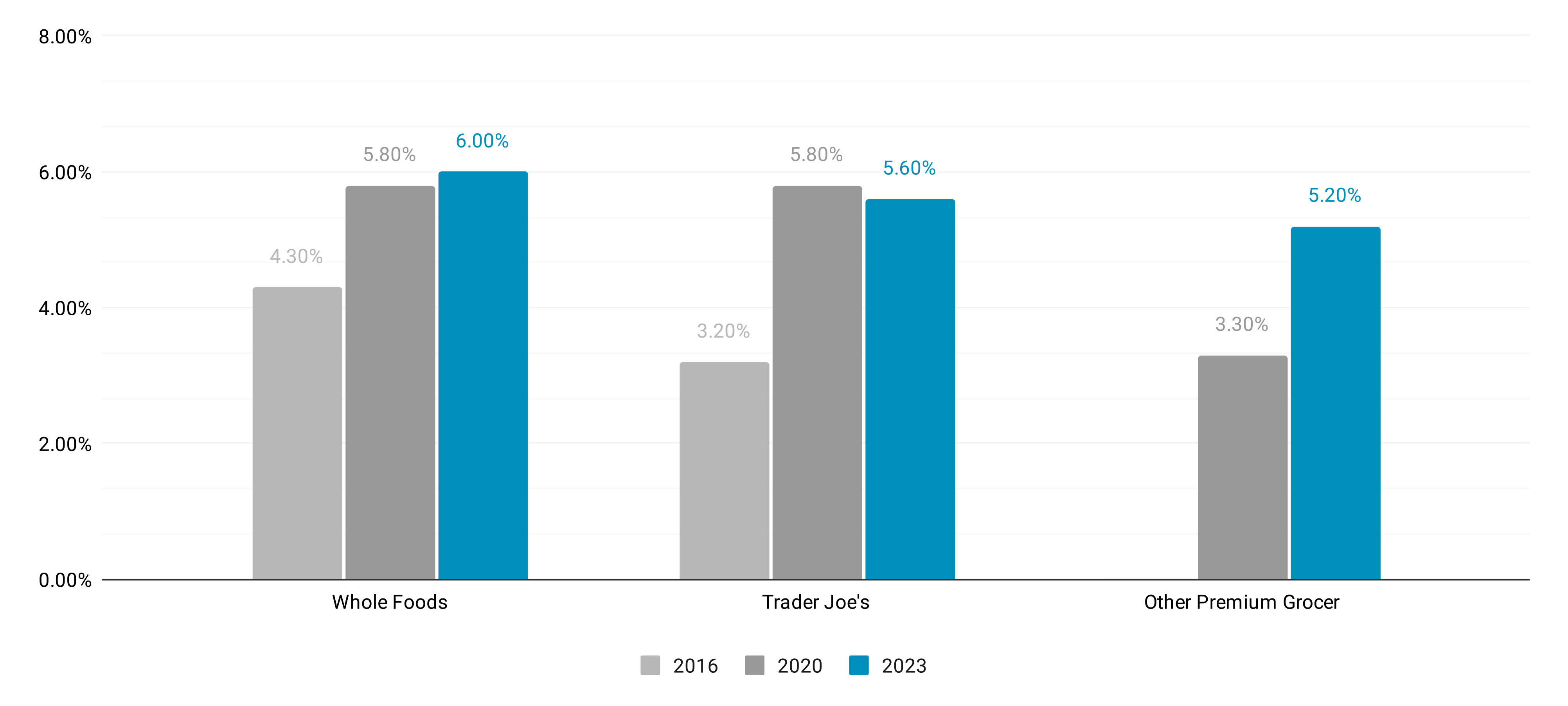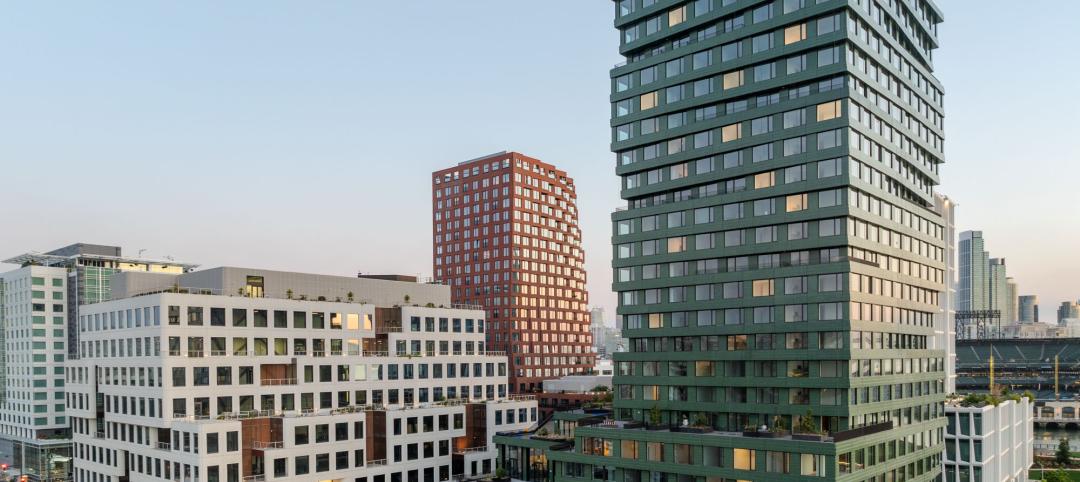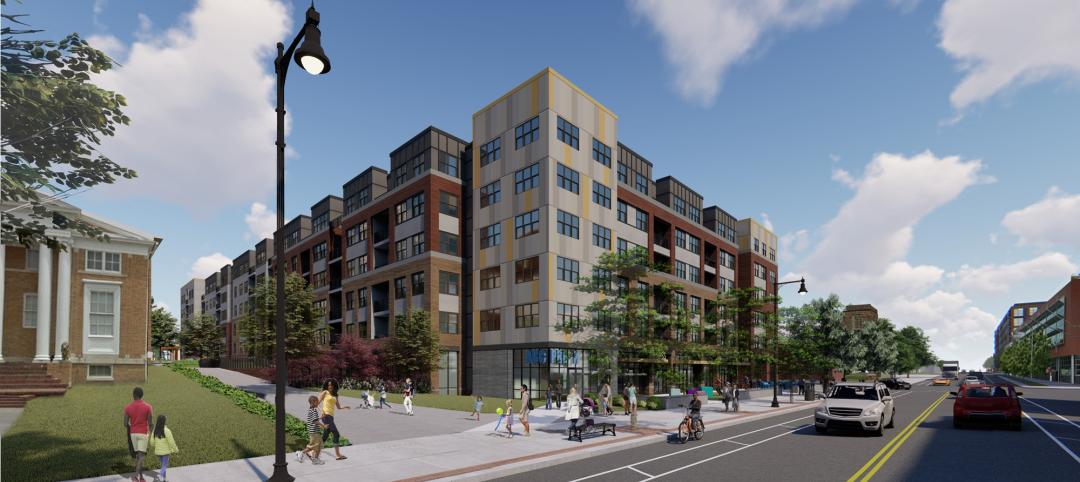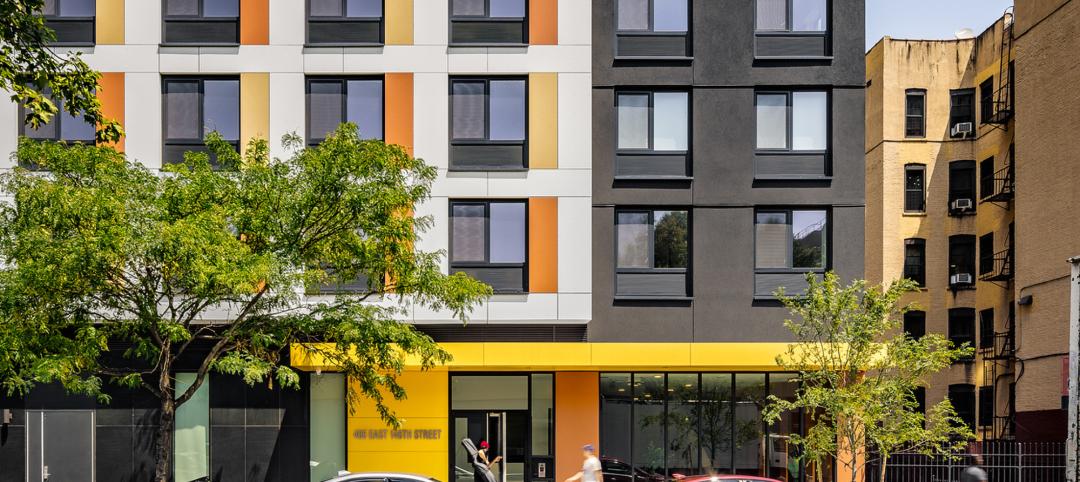Optimizing land usage is becoming an even bigger priority for developers. In some city centers, many large grocery stores sprawl across valuable land. This inefficient use of space doesn't reflect the best possible use for these desirable locations, according to the recent RCLCO report The Supermarket Rental Sweep: Analyzing Multifamily Rent Premiums Generated by Grocery Store Anchors.
One way for grocers and retail outlets to increase interest in a desirable location is by partnering with multifamily developers. The strategy of building housing above a ground floor store not only adds an extra amenity for residents, but increases the rental premium desired by developers.
Rental Rate Premiums from Ground-Floor Grocers
The multifamily performance of such partnerships is nothing to scoff at. The RCLCO analysis finds that apartment communities with a ground-floor Whole Foods achieve a rental rate premium of 6% on average—comparable to similar communities in the immediate area.
A similar figure is present for Trader Joe communities; these premiums average out to 5.6% which is down only slightly from 5.8% in 2020. In other premium grocers like Fairway, Safeway, Sprouts, and Harris Teeter, the above-ground community premium increased from 3.3% in 2020 to 5.2% in the 2023 study.
Rent Premium by Grocer

For its analysis, RCLCO looked at the scale, age, type of construction, quality, and market positioning of nearly 100 mixed-use centers compared to their local counterparts. These include 37 multifamily properties with a ground-floor Whole Foods, 21 with Trader Joe’s, and 30 with other premium grocers.
RCLCO identified two to five similar apartment buildings in each local neighborhood and adjusted the rents to account for size differences. Then, they compared the adjusted rents of these similar buildings to the average rent in the grocer-anchored case study building. The researchers believe this methodology led to a quality-adjusted comparison that could point to the direct impact that a ground-floor grocer has on a community (as opposed to rent prices being higher due to higher quality amenities and finishes).
In general, the strong performance of apartments with ground-floor grocers since RCLCO’s 2016 study indicates that “the momentum for these mixed-use offerings continues to grow.”
Click here to read the full findings of the RCLCO report: The Supermarket Rental Sweep: Analyzing Multifamily Rent Premiums Generated by Grocery Store Anchors
RELATED
Related Stories
MFPRO+ New Projects | Oct 30, 2024
BIG’s One High Line finally reaches completion in New York City’s West Chelsea neighborhood
One High Line, a luxury residential project spanning a full city block in New York’s West Chelsea neighborhood, reached completion this summer following years of delays related to investor lawsuits.
MFPRO+ New Projects | Oct 30, 2024
Luxury waterfront tower in Brooklyn features East River and Manhattan skyline views
Leasing recently began for The Dupont, a 41-story luxury rental property along the Brooklyn, N.Y., waterfront. Located within the 22-acre Greenpoint Landing, where it overlooks the newly constructed Newtown Barge Park, the high-rise features East River and Manhattan skyline views along with 20,000 sf of indoor and outdoor communal space.
MFPRO+ News | Oct 22, 2024
Project financing tempers robust demand for multifamily housing
AEC Giants with multifamily practices report that the sector has been struggling over the past year, despite the high demand for housing, especially affordable products.
Codes and Standards | Oct 16, 2024
North Carolina’s code policies likely worsened damage caused by Hurricane Helene
The North Carolina Legislature’s rejection of building code updates likely worsened the damage caused by Hurricane Helene, code experts say. Over the past 15 years, lawmakers rejected limits on construction on steep slopes, which might have reduced the number of homes destroyed by landslides.
MFPRO+ News | Oct 16, 2024
One-third of young adults say hurricanes like Helene and Milton will impact where they choose to live
Nearly one-third of U.S. residents between 18 and 34 years old say they are reconsidering where they want to move after seeing the damage wrought by Hurricane Helene, according to a Redfin report. About 15% of those over age 35 echoed their younger cohort’s sentiment.
MFPRO+ News | Oct 9, 2024
San Francisco unveils guidelines to streamline office-to-residential conversions
The San Francisco Department of Building Inspection announced a series of new building code guidelines clarifying adaptive reuse code provisions and exceptions for converting office-to-residential buildings. Developed in response to the Commercial to Residential Adaptive Reuse program established in July 2023, the guidelines aim to increase the viability of converting underutilized office buildings into housing by reducing regulatory barriers in specific zoning districts downtown.
Mixed-Use | Oct 7, 2024
New mixed-use tower by Studio Gang completes first phase of San Francisco waterfront redevelopment
Construction was recently completed on Verde, a new mixed-use tower along the San Francisco waterfront, marking the end of the first phase of the Mission Rock development. Verde is the fourth and final building of phase one of the 28-acre project that will be constructed in several phases guided by design principles developed by a design cohort led by Studio Gang.
Sponsored | | Oct 7, 2024
ProWood® FR Used in Two 6-Story Multifamily Units
How ProWood FR Fire-Retardant Treated Products Benefited this affordable housing project
Affordable Housing | Oct 4, 2024
3 new affordable housing projects for October 2024
As affordable housing continues to grow, more projects are looking to diversify their footprint by adding mixed-use components, community areas, and more.
MFPRO+ News | Sep 24, 2024
Major Massachusetts housing law aims to build or save 65,000 multifamily and single-family homes
Massachusetts Gov. Maura Healey recently signed far-reaching legislation to boost housing production and address the high cost of housing in the Bay State. The Affordable Homes Act aims to build or save 65,000 homes through $5.1 billion in spending and 49 policy initiatives.


















